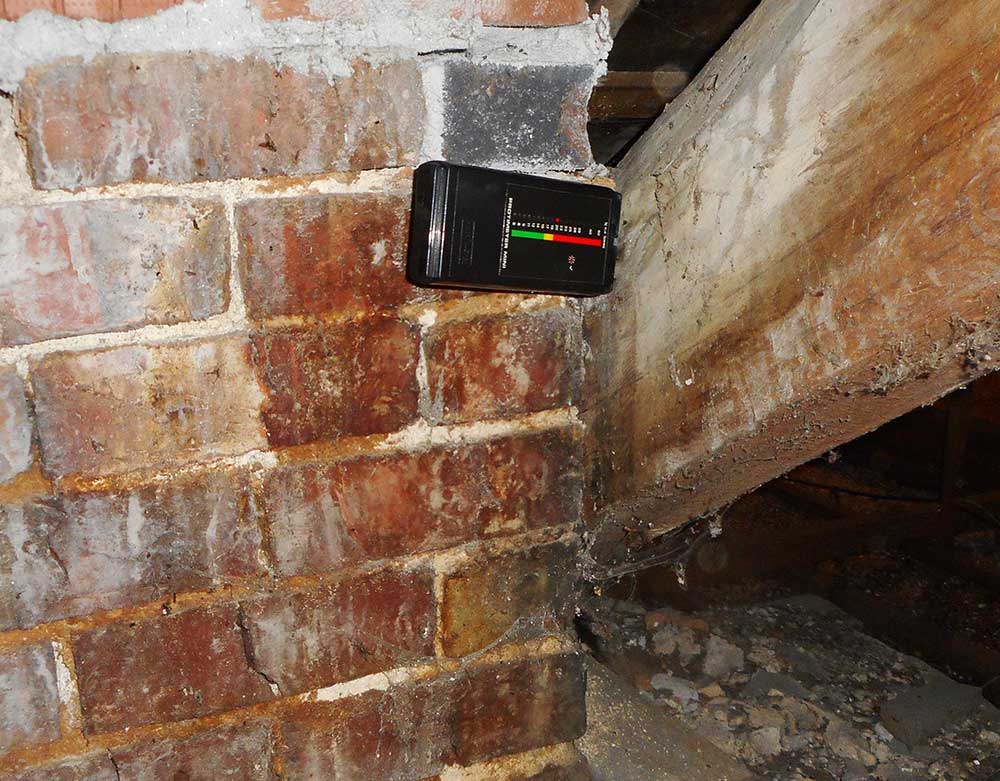Defect Reports
We are often asked to look at specific defects by current home owners or prospective buyers, rather than carry out a full comprehensive survey report on the whole property. This can prove cost effective especially if only one type of defect concerns you, but if there are a number of defects or possible shortcomings then either a Home Survey Level 2 or Building Survey Level 3 would prove more cost effective and appropriate.
Defect analysis can be carried out by way of a Limited Defect inspection and report. The scope of the report is set out and agreed in writing before the inspection is carried out.
Limited defect reports have been carried out for matters such as:
- assessment and advice on damp issues.
- condition reports on buildings for owners and managers.
- assessment of loft conversions.
- assessment of removed/altered chimney breasts.

Snagging Lists
When buying a brand new home a Homesurvey style report is not designed for picking up all the outstanding unfinished works and shortcomings. Instead we advise many clients to choose a “Snagging List” style report. Additonal servcies can be added to the report including a valuation, if required.
The snagging list will include advice on the general condition of the property and any major defects or shortcomings that might affect your decision to purchase. The report will not list minor defects unless we consider these might be significant in aiding your decision whether to proceed, or if there is a reasonable cost implication in remedying the fault.
The Chartered Surveyor WILL:
Undertake a general, surface inspection of those parts of the property that are reasonably accessible.
In this context, reasonably accessible means visible and readily available for inspection from ground and first floor levels, without endangering the safety of the surveyor and without damaging the property. Roof spaces (of houses) and flat roofs will be inspected, if safe and ready access is possible using a three metre surveyors’ ladder.
Inspect the exterior of the building from ground level;
both from within the boundaries of the property and from any immediately adjacent public areas, using binoculars and, where necessary, with the use of a three-metre ladder. The interior will be inspected within the limitations referred to elsewhere.
Lift drainage manhole covers,
where these are readily accessible and where it is safe and possible to do so without the use of specialist lifting equipment and without causing damage. Covers fixed with screws or bolts will not be lifted.
Inspect and provide general comments on the visible parts of the gas, electrical, heating, water and drainage installations, including water storage tanks and boilers.
We will not test the service installations, gas appliances, stoves, fireplaces, kitchen appliances, etc. and will not confirm whether they are serviceable or compliant with the relevant Regulations. If, however, the surveyor identifies or suspects an obvious problem or defect, advice will be given as to what action should be taken.
Inspect fences, walls (including earth-retaining walls) and other structures against the boundaries of the plot together with paths, drives and other features, together with comments on any trees or plants which may have an impact on the property.
The Chartered Surveyor WILL NOT:
Open up parts of the building that are covered, unexposed or inaccessible,
such as sub-floor voids and the surveyor will not remove or disturb insulating material within the roof void.
Raise fitted floor coverings.
Test any of the services within the building.
Carry out excavations to expose foundations or open-up wall cavities and expose cavity wall ties.
Examine temporary structures or leisure facilities such as sheds, greenhouses and swimming pools.
Inspect internal parts of chimneys, flues or flue liners.
Make enquiries concerning mining, land stability, contamination and other environmental issues.
If the surveyor suspects a problem he will recommend a further investigation.
